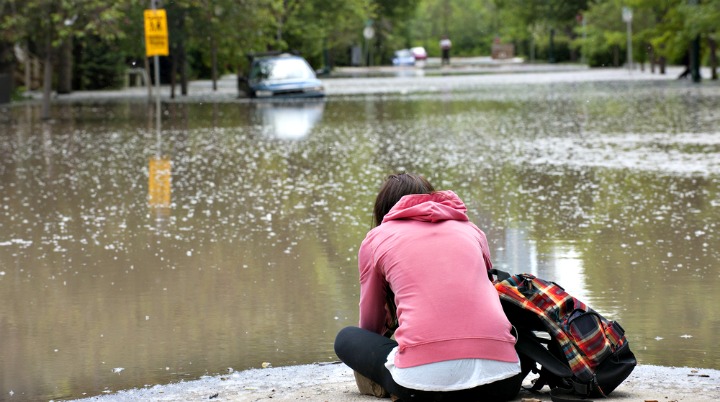Tips for After a Flood: How to Bounce Back After You Lose Everything

The floodwaters are receding, and your family is safe. But your home? Destroyed. Your belongings? Waterlogged. Here’s how to navigate a flood’s immediate aftermath — and the flood insurance claims process.
Safety first
When you first return to your neighborhood to assess the damage, safety should be your main concern. The Federal Emergency Management Agency (FEMA) suggests the following guidelines:
- Don’t go back home unless authorities have declared it safe to do so.
- Listen to or read news reports to find out whether the local water supply is contaminated.
- Avoid walking through or touching floodwater. Gas, oil and sewage can contaminate water in the wake of a flood — it could even be electrically charged from downed power lines. Moving water just 6 inches deep can knock you off balance.
- Watch out for areas where the water has receded. Floods can weaken roads, causing them to be unsafe.
- Before entering your home, walk along the outside of it if it’s safe to do so. Look for structural damage. If you find any, get the building inspected before you go inside. If there’s still any water around your building, do not go inside.
- If pipes are damaged in your home, turn off your house’s main water valve.
- If you smell gas or hear a hissing sound, open a window and get out of the building. If you can, turn off the main gas valve from outside the building, and call the gas company. Don’t light candles or use gas lanterns for lighting until you know there are no gas leaks.
Going through the wreckage
Once you’ve eliminated all immediate dangers, you can begin the process of sifting through what’s left in your home.
- Throw out all food that has come in contact with floodwater, FEMA recommends.
- You probably won’t be able to recover everything, the American Red Cross warns. Start with your valuables, like heirlooms, jewelry, important papers and photographs. Wash the mud off, wrap them in plastic and take them to a safe place where they can dry. Time is of the essence, though — if you don’t have time to clean certain items, place them in a frost-free freezer to prevent mildew.
- Open windows. According to the Red Cross, this will reduce the moisture inside a home.
- When opening cabinets, be careful of falling items.
- If your basement is flooded, pump the water out slowly only about one-third of the water per day, according to FEMA. If you go too quickly, the water in the ground around your house will push the walls in.
- Turn off the home’s electricity. Shovel out as much mud as you can, then hose out the rest. Disinfect anything that came in contact with floodwater or mud.
Filing an insurance claim
Home insurance policies do not cover flood damage. To be covered, you would need separate flood insurance coverage provided through the National Flood Insurance Program (NFIP) or a few private insurers. The NFIP recommends doing the following to ease the process of filing an insurance claim:
- Call your insurer. You should hear from an adjuster within a few days. Be sure to supply your policy number and contact information that will help the adjuster reach you at all times.
- Take photos of your damaged home and belongings, and make a list of everything. If you prepared a home insurance inventory before the flood, your claim might be processed more quickly. Your inventory should include the value, date of purchase and receipts if possible for all your valuables.
File a “proof of loss” claim; your adjuster will provide you with the form. If you have NFIP coverage, you generally have 60 days after the flood to file. Once you and your insurer agree on the amount of damage, you’ll receive your payment.
